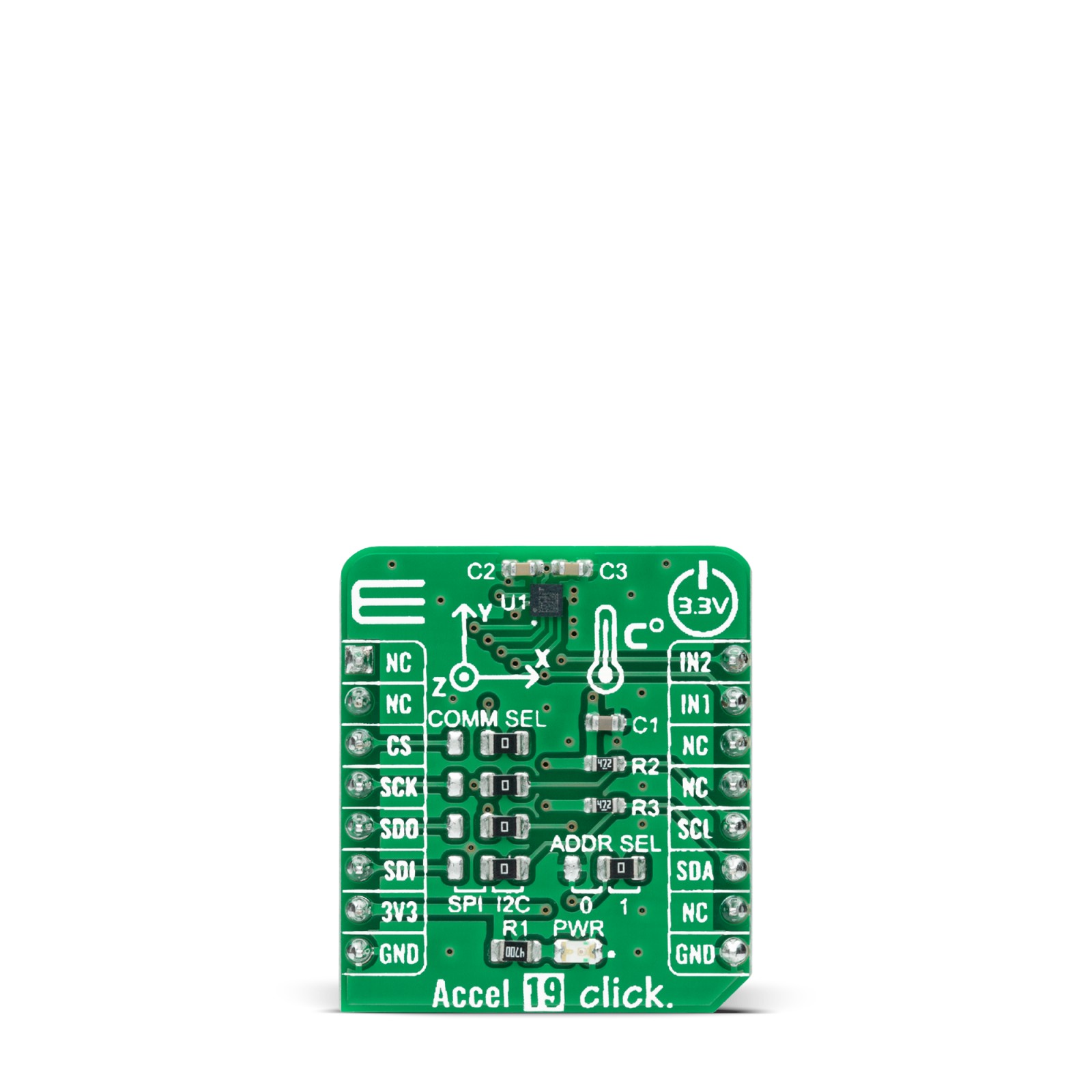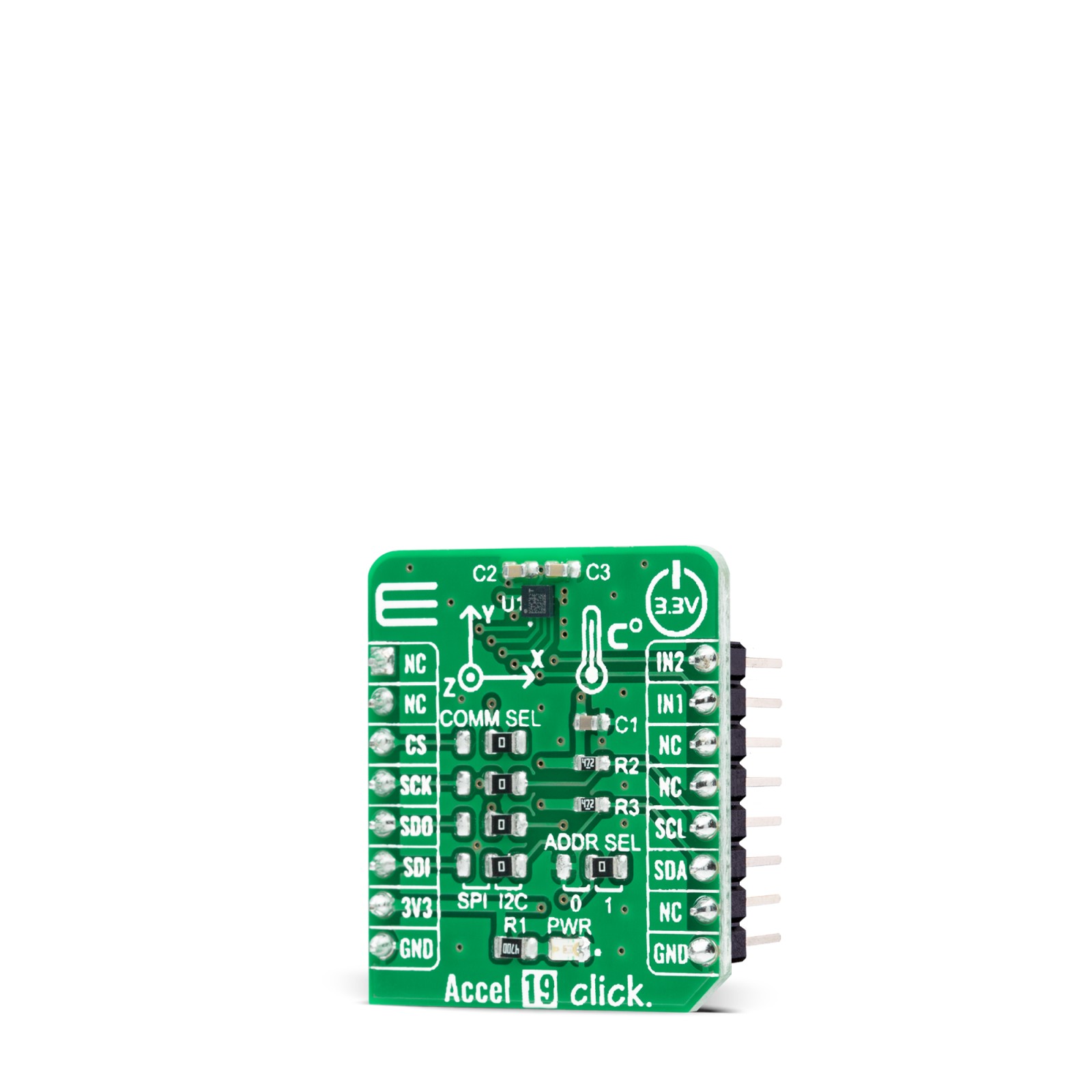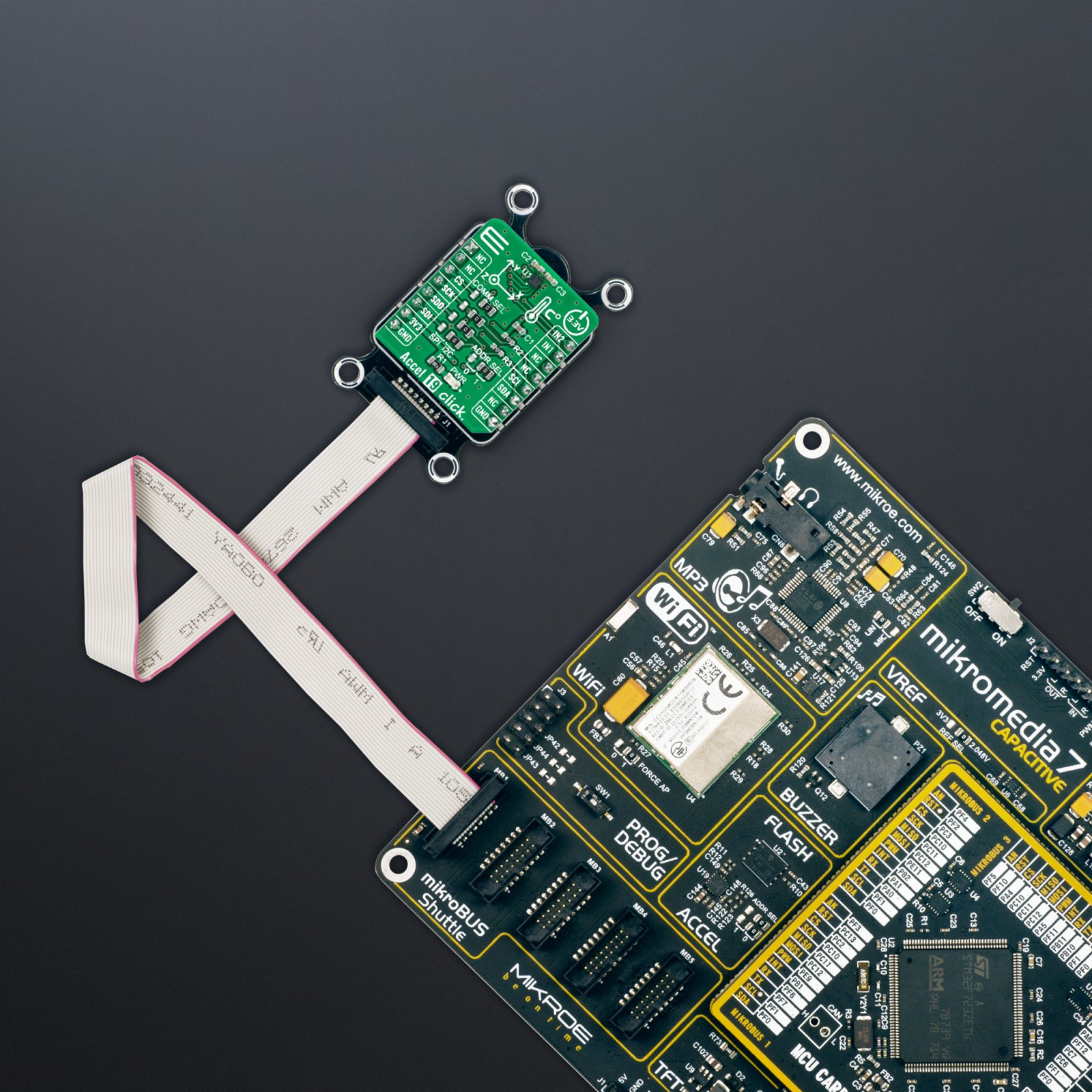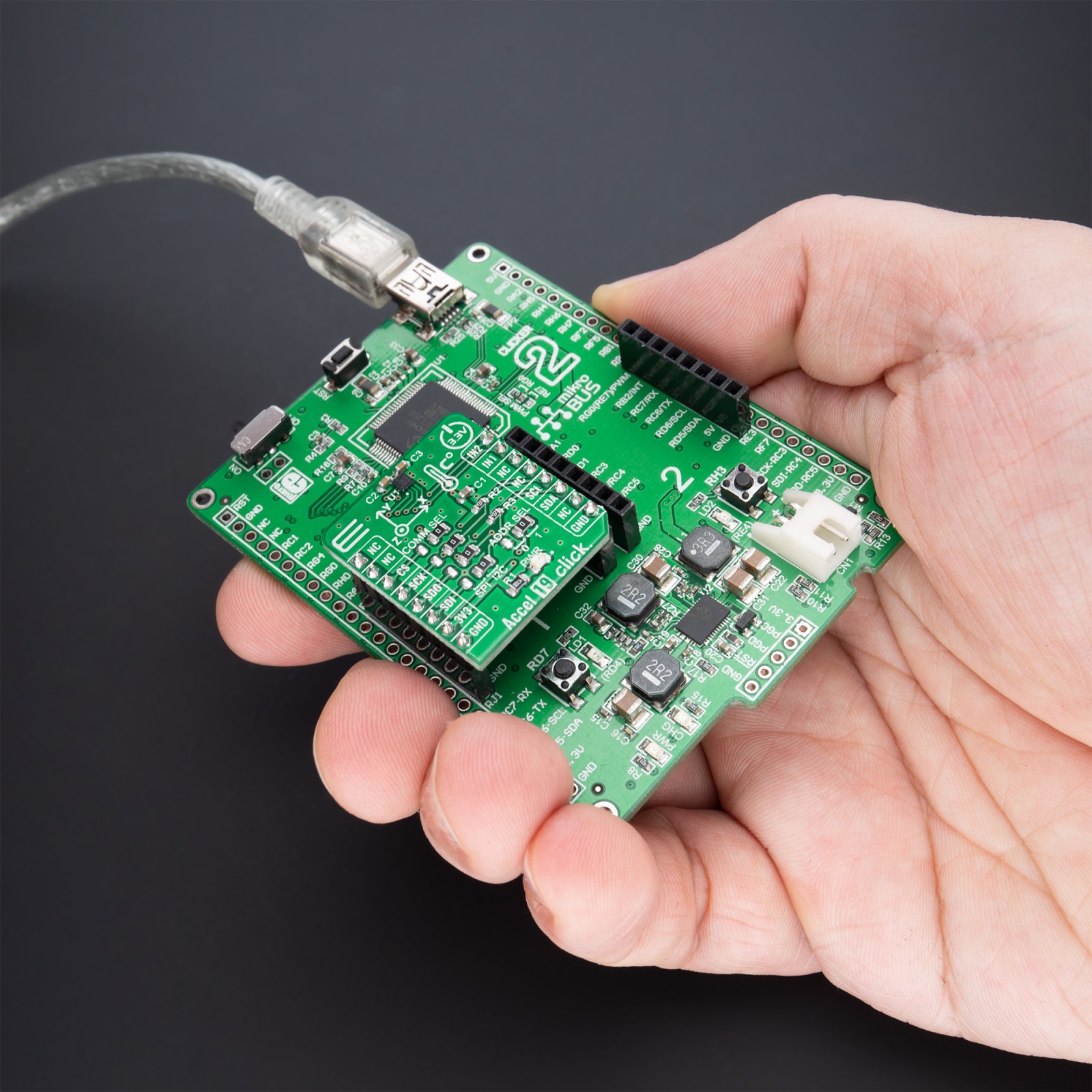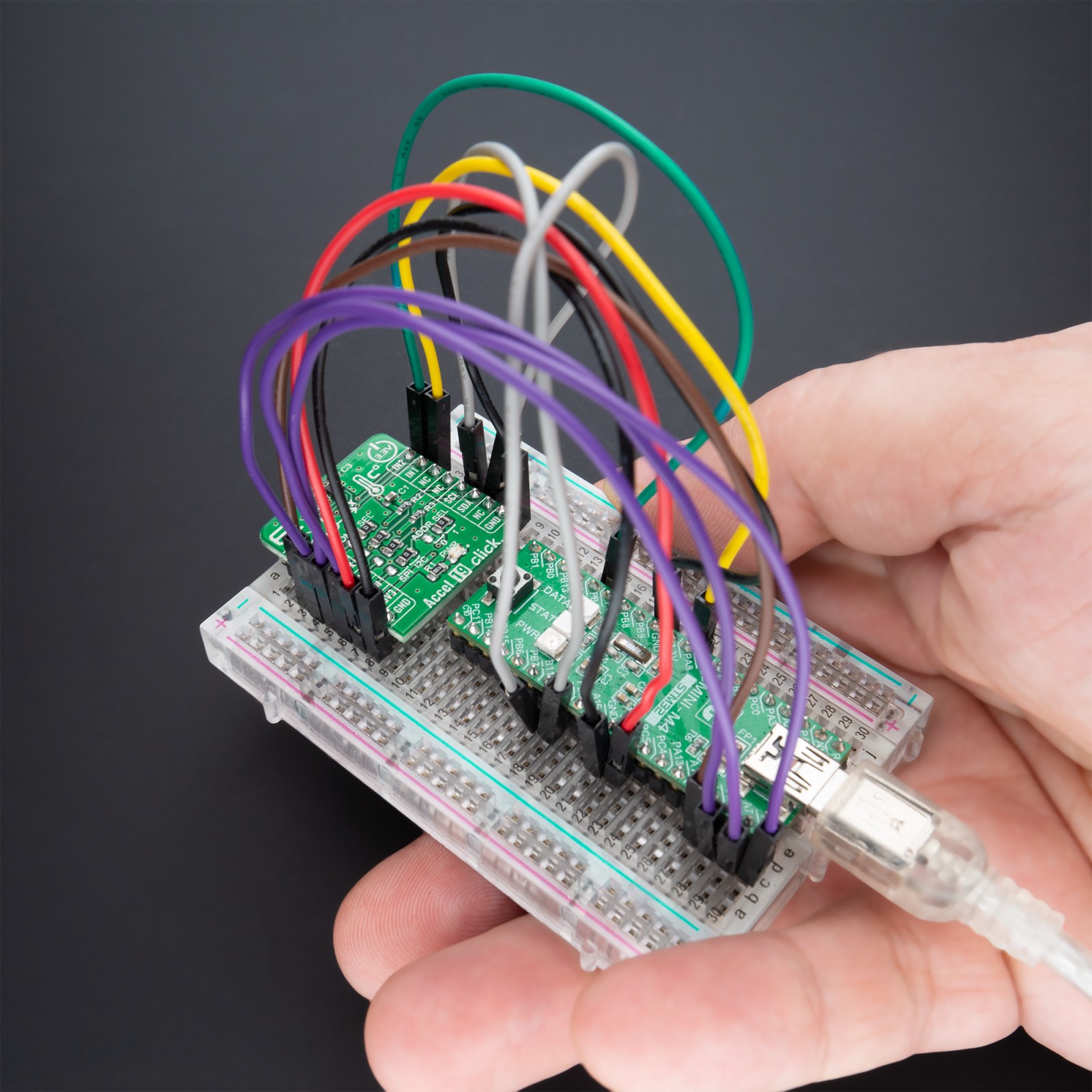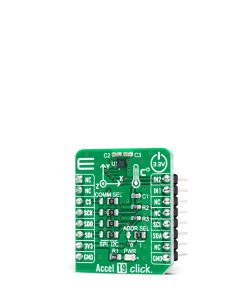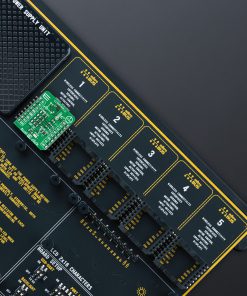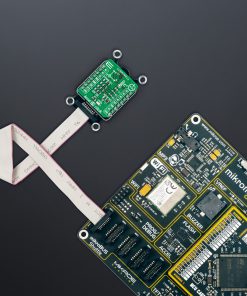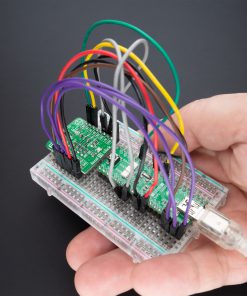Accel 19 Click
R360.00 ex. VAT
Accel 19 Click is a compact add-on board that contains an acceleration sensor. This board features the LIS2DTW12, an ultra-low-power high-performance three-axis accelerometer from STMicroelectronics. It allows selectable full-scale acceleration measurements in ranges of ±2g, ±4g, ±8g, or ±16g in three axes with a configurable host interface that supports both SPI and I2C serial communication. Alongside an embedded 0.8°C accuracy temperature sensor with ODRs ranging from 50 to 1.6Hz and resolution from 8 to 12 bits, it has a dedicated internal engine to process motion and acceleration detection. This Click board™ is suitable for various applications such as motion-activated functions and user interfaces, tap-double-tap recognition, free-fall detection, tracking, and many more.
Accel 19 Click is supported by a mikroSDK compliant library, which includes functions that simplify software development. This Click board™ comes as a fully tested product, ready to be used on a system equipped with the mikroBUS™ socket.
Stock: Lead-time applicable.
| 5+ | R342.00 |
| 10+ | R324.00 |
| 15+ | R306.00 |
| 20+ | R294.48 |

